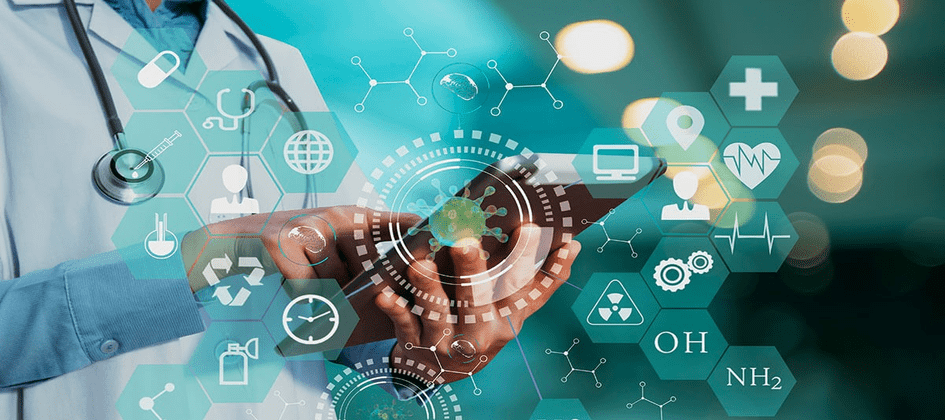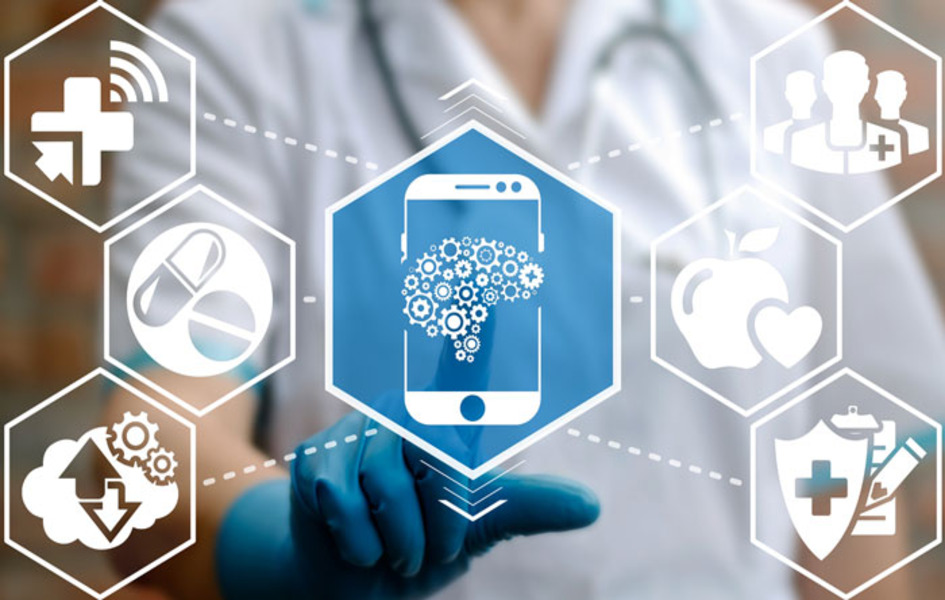The Internet of Things (IoT) is rapidly changing the way we interact with the world around us. IoT devices are increasingly common and are providing new and innovative ways to manage and optimize our lives, from homes to workplaces. One area where the IoT has a significant impact is in healthcare, where the Internet of Medical Things (IoMT) is helping to improve patient outcomes, reduce costs, and enhance the overall quality of care.
The "Internet of Medical Things (IoMT) (or "IoT in Healthcare") refers to interconnected medical applications that are a subset of the Internet of Things (IoT). IoMT devices connect patients, doctors, and medical devices through secure networks, including hospital diagnostic gear, equipment, and wearable technology.
The market size of IoMT reached 13.23 billion USD in 2020, and the Compound annual growth rate (CAGR) is estimated to be 24.6% within the next five years, growing to 187.60 billion USD. In this blog, we can explore the various aspects of IoT in healthcare, including its subtopics, benefits, impacts, and future role in the industry.

Some vital applications of IoMT in hospitals include x-ray machines, patient monitoring, CT scans, and apps through which patients and doctors connect remotely.
Let's take a closer look at some of the critical subtopics of IoMT:
Wearable Devices: Wearable devices are small electronic devices. They are worn on the body and can track various metrics such as heart rate, blood pressure, and activity levels. These devices are connected to the internet and can provide real-time feedback to healthcare providers and patients, enabling early intervention and improving outcomes. To know more about wearable medical devices in detail, visit: https://bit.ly/40xlN4N
Remote monitoring: Using technology to monitor patients outside of traditional clinical settings is called remote monitoring. This technology allows patients to receive care in their homes or other non-clinical settings, improving their quality of life and reducing healthcare costs. Remote monitoring is used for diabetes, heart disease, and chronic obstructive pulmonary disease (COPD).
Data Analytics: Data analytics involves using advanced analytics techniques to analyze and interpret large volumes of data. In the IoMT ecosystem, data analytics processes the vast amounts of data generated by medical devices and applications, providing insights to improve patient outcomes.
Cybersecurity: Cybersecurity is a critical subtopic in the IoMT ecosystem, given the sensitive nature of medical data. As medical devices and applications are connected to the internet, the risk of cyber-attacks is high, which can compromise patient privacy and safety. Therefore, it is essential to implement robust cybersecurity measures to protect the IoMT ecosystem from cyber threats.
Advantages of IoMT
IoMT has many advantages, including remote patient monitoring, reduced hospitalization, and improved patient outcomes. Patients can be monitored remotely, reducing the need for hospitalization and allowing for early detection of potential health issues. IoMT can also be used to monitor patients recovering from surgery and recently discharged patients from the hospital. Healthcare professionals can remotely monitor patients' progress and intervene if any issues arise by equipping them with wearable sensors that track their vital signs. IoMT also enables healthcare providers to provide personalized care, resulting in better patient outcomes.
In addition to improving diagnosis and monitoring, the IoMT is also helping to improve medication management. With the help of connected pill bottles and dispensers, patients can receive reminders to take their medication, and healthcare professionals can track adherence to treatment plans. This results in fewer medication errors and more accurate dosages for patients.
Challenges of IoMT
While IoMT has many benefits, it also poses some challenges. The collection and storage of patient data raise concerns about privacy and security. Organizations must ensure that their networks are secure, and that patient data is encrypted and stored in compliance with regulations like HIPAA. Another challenge is interoperability. With so many different devices and sensors on the market, we must ensure that devices work together seamlessly. It is challenging for healthcare professionals to access and analyze patient data from multiple sources. Standards like the FHIR (Fast Healthcare Interoperability Resources) standard are helping to address this issue by providing a common framework for sharing healthcare data. Moreover, the sheer volume of data generated by IoMT can be overwhelming, and healthcare providers must have the resources to manage and analyze this data effectively.
The future of IoMT
The future of IoMT is promising, with healthcare providers adopting IoMT technology to improve patient care and reduce healthcare costs. Technology will continue to evolve with the development of new medical devices and applications that can provide even more accurate and precise information about a patient's health.
Conclusion:
The Internet of Medical Things enables healthcare professionals to provide personalized and precise care. The benefits of IoMT are numerous, including improved patient outcomes and reduced healthcare costs. However, the challenges of IoMT, such as privacy and security-related concerns; and interoperability, must be addressed soon. As technology continues to evolve, the future of IoMT looks promising, and it will undoubtedly play a significant role in the future of healthcare.
Opinion of MMPeer:
“It brings continuous health monitoring, makes hospitals smarter, helps me keep a track on my patients, makes insurance claims transparent, making cities healthier and helps in medical researches.”- Dr Daniel.
Are you a physician or healthcare practitioner?
Become a My Medical panel member and explore the many benefits of joining. Start your paid medical survey journey here - sign up











